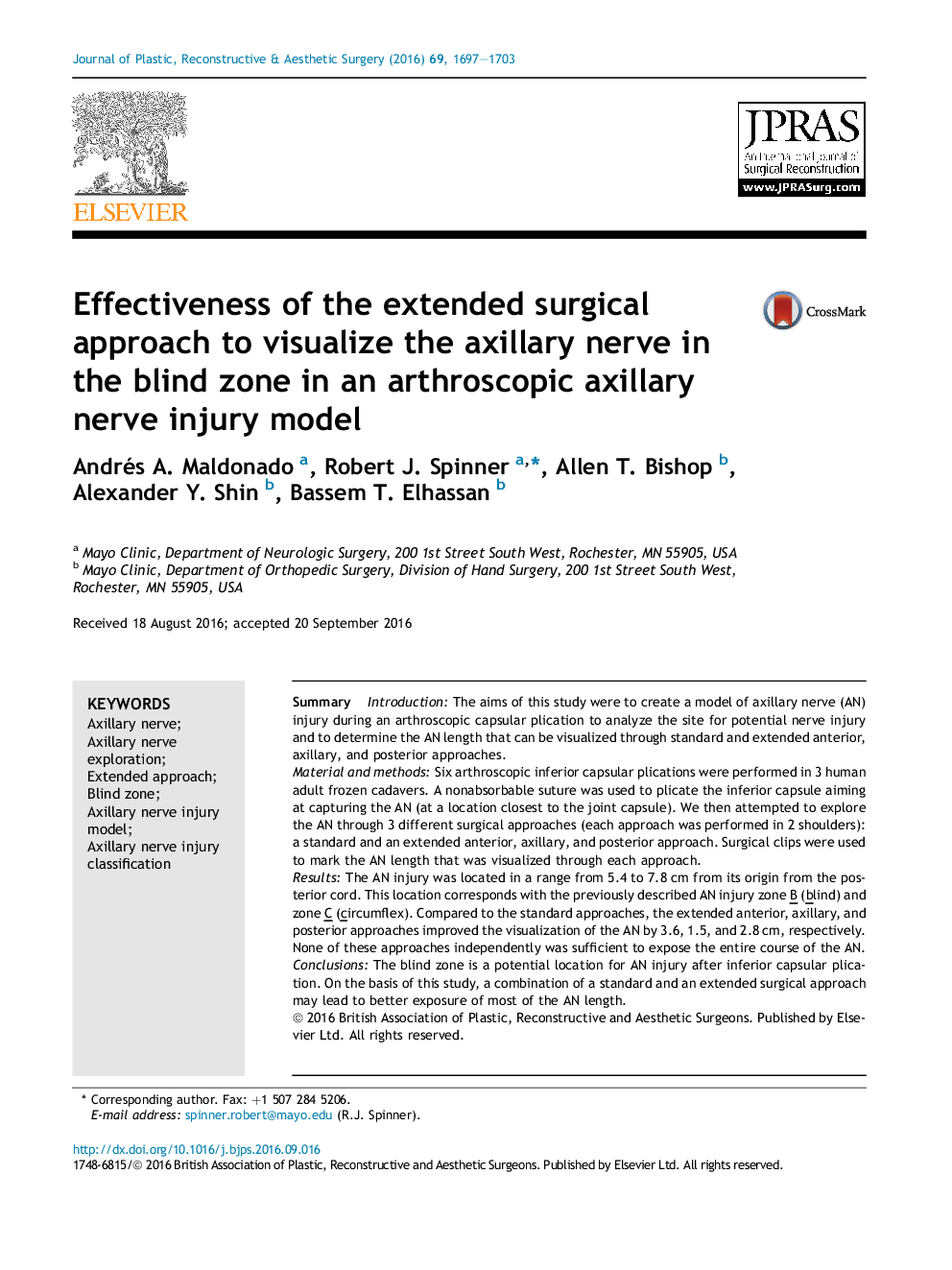| Article ID | Journal | Published Year | Pages | File Type |
|---|---|---|---|---|
| 5715451 | Journal of Plastic, Reconstructive & Aesthetic Surgery | 2016 | 7 Pages |
SummaryIntroductionThe aims of this study were to create a model of axillary nerve (AN) injury during an arthroscopic capsular plication to analyze the site for potential nerve injury and to determine the AN length that can be visualized through standard and extended anterior, axillary, and posterior approaches.Material and methodsSix arthroscopic inferior capsular plications were performed in 3 human adult frozen cadavers. A nonabsorbable suture was used to plicate the inferior capsule aiming at capturing the AN (at a location closest to the joint capsule). We then attempted to explore the AN through 3 different surgical approaches (each approach was performed in 2 shoulders): a standard and an extended anterior, axillary, and posterior approach. Surgical clips were used to mark the AN length that was visualized through each approach.ResultsThe AN injury was located in a range from 5.4 to 7.8Â cm from its origin from the posterior cord. This location corresponds with the previously described AN injury zone B (blind) and zone C (circumflex). Compared to the standard approaches, the extended anterior, axillary, and posterior approaches improved the visualization of the AN by 3.6, 1.5, and 2.8Â cm, respectively. None of these approaches independently was sufficient to expose the entire course of the AN.ConclusionsThe blind zone is a potential location for AN injury after inferior capsular plication. On the basis of this study, a combination of a standard and an extended surgical approach may lead to better exposure of most of the AN length.
